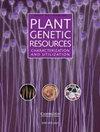Overexpression of geraniol-10-hydroxylase improves valtrate accumulation in Valeriana jatamansi
IF 0.7
4区 生物学
Q3 PLANT SCIENCES
Plant Genetic Resources: Characterization and Utilization
Pub Date : 2023-07-03
DOI:10.1017/s1479262123000400
引用次数: 0
Abstract
Valtrate is the major active component of iridoids in Valeriana jatamansi plants, and has been widely used for the treatment of various diseases, giving rise to rapidly increasing market demands. The gene VjG10H from V. jatamansi encoding geraniol 10-hydroxylase (G10H) was introduced into V. jatamansi hairy roots and a transgenic hairy root culture system of V. jatamansi with good valtrate production ability was successfully established for the first time. The valtrate content of VjG10H-transformed lines ranged from 8.12 to 10.77 mg/g, with an average valtrate content (9.52 mg/g) of all the four G lines being higher than the non-transgenic hairy root line. Overexpression of VjG10H significantly improved valtrate production, indicating that G10H played an important role in stimulating valtrate accumulation. MeJA treatment stimulated valtrate accumulation in all of the VjG10H overexpression recombinant lines compared to untreated cultures, indicating that methyl jasmonate treatment was another effective regulation target for metabolic engineering of valtrate biosynthesis in V. jatamansi. Thus, transgenic hairy root technology coupled with elicitor treatments may be a promising strategy to increase valtrate yield in V. jatamansi.过表达香叶醇-10-羟化酶可改善缬草中戊酸盐的积累
戊酸盐是缬草中环烯醚萜类化合物的主要活性成分,已被广泛用于治疗多种疾病,市场需求量迅速增加。将日本野檀香香叶醇10-羟化酶(G10H)基因VjG10H导入日本野檀香毛状根中,首次成功建立了具有良好产戊酸能力的转基因日本野檀香毛状根培养体系。vjg10h转化系的戊酸盐含量在8.12 ~ 10.77 mg/g之间,4个g系的戊酸盐平均含量(9.52 mg/g)均高于未转基因的毛状根系。过表达VjG10H可显著提高戊酸盐的产量,说明G10H在促进戊酸盐积累中发挥了重要作用。与未处理的VjG10H相比,MeJA处理刺激了所有VjG10H过表达重组株中戊酸盐的积累,这表明茉莉酸甲酯处理是茉莉酸盐生物合成代谢工程的另一个有效调控靶点。因此,转基因毛状根技术与诱导子处理相结合,可能是一种很有前途的策略,以提高紫斑草的价值产量。
本文章由计算机程序翻译,如有差异,请以英文原文为准。
求助全文
约1分钟内获得全文
求助全文
来源期刊

Plant Genetic Resources: Characterization and Utilization
Agricultural and Biological Sciences-Agronomy and Crop Science
CiteScore
2.80
自引率
0.00%
发文量
29
审稿时长
>12 weeks
期刊介绍:
Plant Genetic Resources is an international journal which provides a forum for describing the application of novel genomic technologies, as well as their integration with established techniques, towards the understanding of the genetic variation captured in both in situ and ex situ collections of crop and non-crop plants; and for the airing of wider issues relevant to plant germplasm conservation and utilisation. We particularly welcome multi-disciplinary approaches that incorporate both a technical and a socio-economic focus. Technical aspects can cover developments in technologies of potential or demonstrated relevance to the analysis of variation and diversity at the phenotypic and genotypic levels.
 求助内容:
求助内容: 应助结果提醒方式:
应助结果提醒方式:


